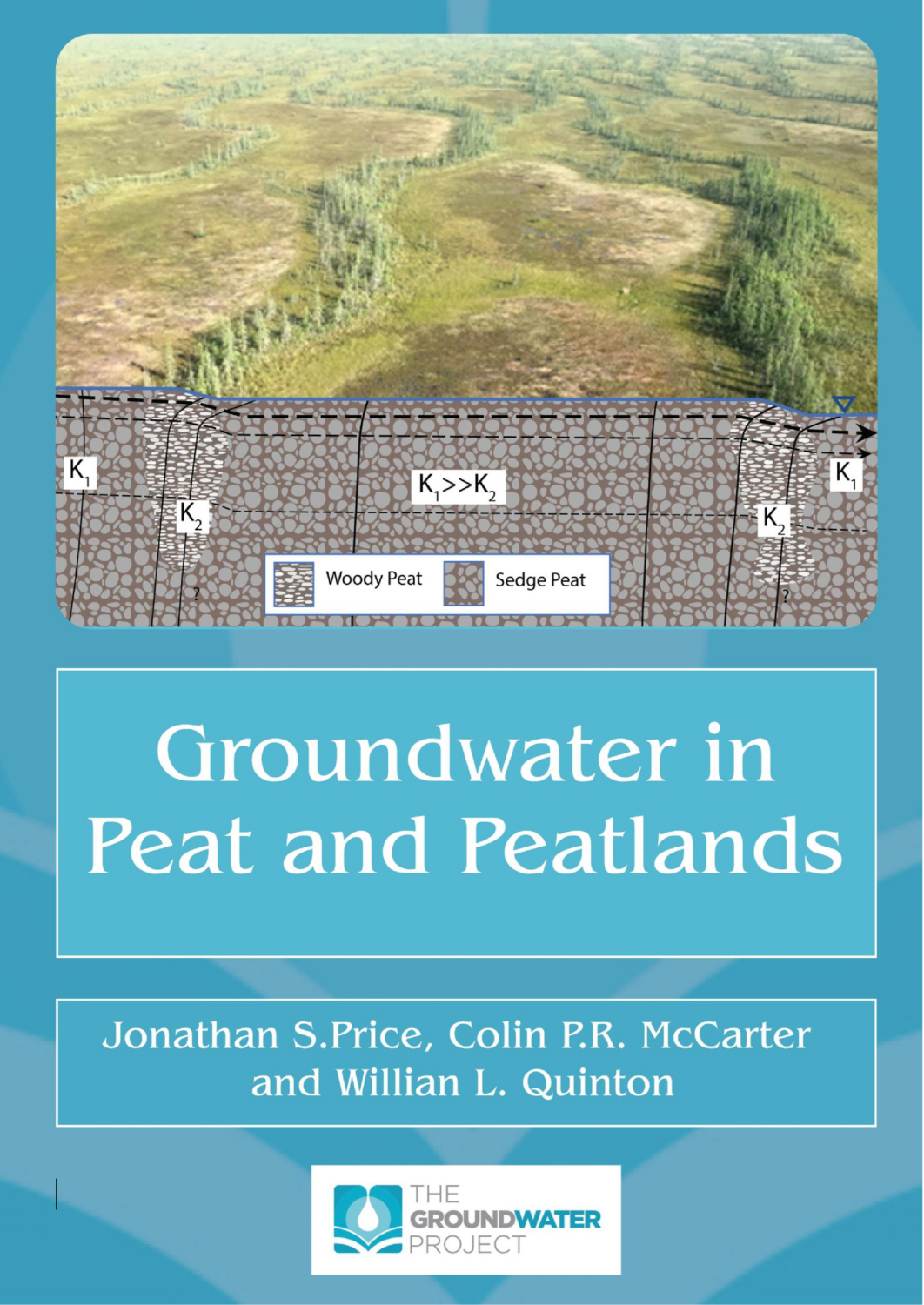Book Title: Groundwater in Peat and Peatlands

Book Description: This book summarizes the role of groundwater in peatland ecosystems. Peatlands are waterlogged areas featuring soil composed of undecomposed plant remains, affecting water flux and storage, runoff control, and groundwater dynamics. They are vital for carbon storage globally. These wetlands take on various forms, including bogs, fens, and swamps, influenced by water sources. Bogs, isolated and rain-fed, harbor sparse trees. Fens and peat swamps receive water from mineral terrain, with fens having a steadier water supply, favoring sedges and mosses, while swamps experience variable water levels, encouraging woody vegetation. Upper peat layers are less decomposed, highly porous, and permeable, while deeper layers are less so, impacting surface and groundwater flows. Managing peatlands requires a thorough understanding of their hydrology and water quality.
Download the pdf version of this book.
Contents
Book Information
Book Description
License
Groundwater in Peat and Peatlands Copyright © by Jonathan S. Price, Colin P.R. McCarter, and William L. Quinton. All Rights Reserved.
